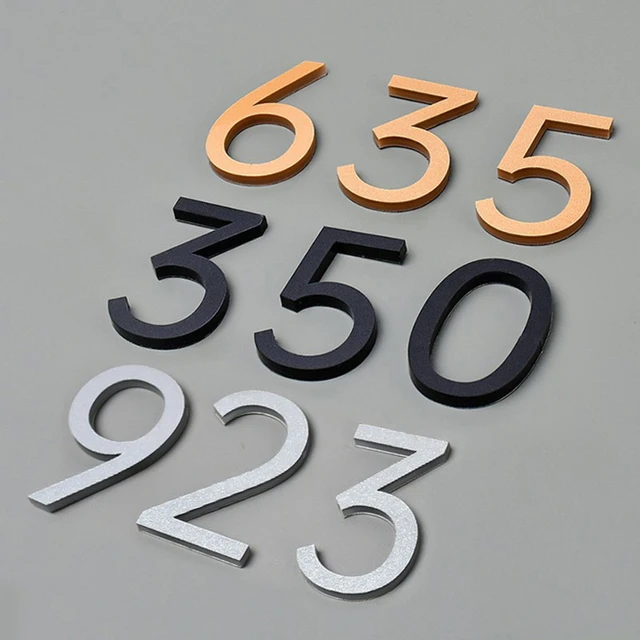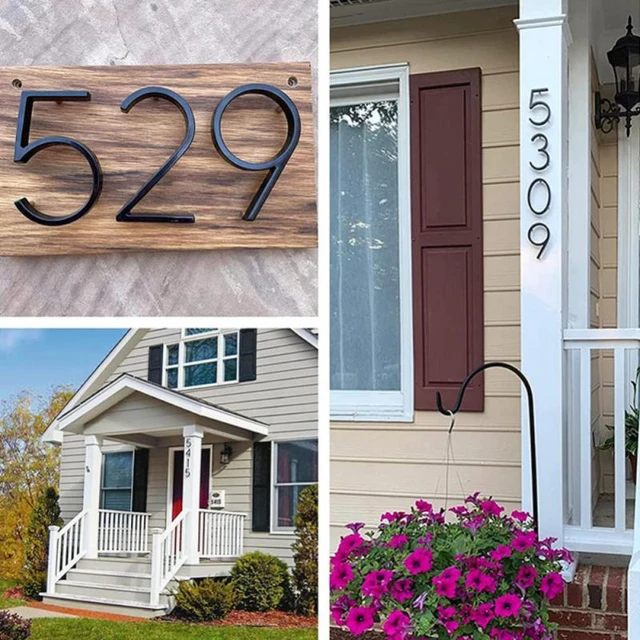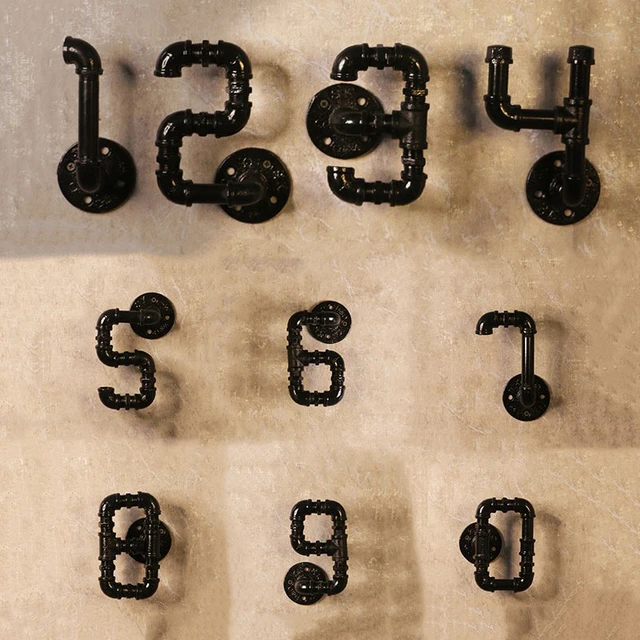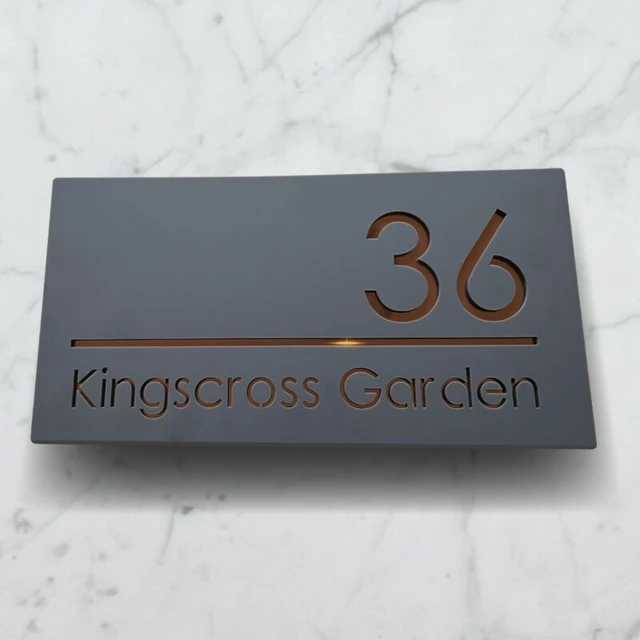 Introduction:
Introduction:
Decorative numbers for houses have become an increasingly popular choice for homeowners to showcase their unique style and enhance the curb appeal of their properties. These personalized address signs feature aesthetically pleasing designs, fonts, and materials that add a touch of elegance and individuality to house exteriors. In this comprehensive guide, we will explore the importance of house numbers, the various design options available in decorative numbers, materials used, installation methods, and maintenance tips. By understanding these aspects, individuals can elevate the visual appeal of their homes and create a lasting impression with distinctive and eye-catching house number signage.
 Importance of House Numbers
Importance of House Numbers
Address Identification:
House numbers play a crucial role in identifying and locating a specific residence.
These numbers assist visitors, mail carriers, and emergency services in quickly and accurately locating a house.
Curb Appeal:
House numbers are an opportunity to enhance the exterior appearance of a home.
Decorative numbers for houses provide a unique and personalized touch, adding character and charm to the overall aesthetic.
Design Options for Decorative Numbers
Fonts and Typography:
Decorative numbers offer a wide array of font choices, ranging from traditional to modern and ornate to minimalistic.
Different fonts can convey specific styles, allowing homeowners to align their address signage with their desired aesthetic.
Embedded Artwork:
Some decorative numbers integrate artistic elements, such as floral motifs, scrollwork, or nature-inspired designs.
These additions enhance the visual appeal and create an inviting atmosphere.
Size and Proportions:
Finding the right size and proportions for decorative numbers depends on the size of the house and other design elements.
Balancing visibility with harmonious integration into the overall house façade is essential for an appealing look.
 Materials Used in Decorative Numbers
Materials Used in Decorative Numbers
Metal:
Metal is a popular choice for decorative numbers, offering durability and a classic aesthetic.
Common metals used include brass, aluminum, wrought iron, or stainless steel.
Wood:
Wood provides a warm and rustic charm to decorative numbers.
Varieties such as cedar, oak, or pine not only add natural beauty but also withstand outdoor elements.
Acrylic and PVC:
Acrylic and PVC are lightweight and weather-resistant materials suitable for both modern and traditional designs.
These materials allow for versatility in shape, color, and customization.
Installation Methods for Decorative Numbers
Surface Mounting:
Surface mounting involves attaching decorative numbers directly onto the house exterior or a dedicated signpost.
It provides a clean and effortless installation option.
Floating or Raised Mounting:
Floating or raised mounting allows decorative numbers to appear as if they are hovering above the surface.
This method adds depth and dimension to the address signage.
Maintenance and Durability of Decorative Numbers
Regular Cleaning:
Decorative numbers should be regularly cleaned to remove dirt and debris, ensuring optimal visibility.
Use mild soap and water to gently wipe down the surface of the numbers.
Protection from Harsh Weather:
Apply a weather-resistant coating or sealant to protect decorative numbers from the effects of sun, rain, or snow.
This helps maintain the appearance and longevity of the signage.
Periodic Inspections:
Conduct regular inspections to ensure that the decorative numbers remain securely attached.
Check for any signs of wear, including loose screws or fading colors, and address any issues promptly.
 Cleaning and maintenance:
Cleaning and maintenance:
To keep decorative numbers for houses clean and well-maintained, follow these tips for cleaning and maintenance:
Regular Dusting:
Dust can accumulate on decorative numbers, especially if they are placed outdoors. Use a soft cloth or a feather duster to gently remove any dust from the surface of the numbers. Regular dusting will help maintain their appearance and prevent dirt build-up.
Mild Soap and Water Cleaning:
If the decorative numbers have become dirty or stained, a gentle cleaning with mild soap and water or laundry detergent can be effective. Mix a small amount of mild detergent or dish soap with warm water. Use a soft sponge or cloth to lightly scrub the surface of the numbers. Rinse thoroughly with clean water and wipe dry with a clean cloth.
Avoid Harsh Cleaners and Abrasive Tools:
Avoid using harsh or abrasive cleaners, as they can damage the surface of the decorative numbers. Similarly, abrasive tools like scrub brushes or scouring pads can leave scratches. Stick to gentle cleaning methods to preserve their appearance.
Outdoor Protection:
If the decorative numbers are placed outdoors, consider using a protective sealant or coating to help prevent the build-up of dirt, fading, or corrosion. Follow the manufacturer’s instructions for applying and maintaining the sealant or coating.
Inspection and Repair:
Regularly inspect the decorative numbers for any signs of damage, such as cracks or loose pieces. If necessary, contact the manufacturer or a professional for repair or replacement. Promptly addressing any damage will help maintain the overall appearance and functionality of the numbers.
Seasonal Care:
Depending on the climate and weather conditions, decorative numbers may require additional care during certain seasons. For example, in areas with cold winters, it may be necessary to remove the numbers and store them indoors during the harshest months to prevent damage from freezing temperatures or excessive moisture.
By following these cleaning and maintenance tips, you can ensure that decorative numbers for houses remain visually appealing and in good condition for an extended period of time.
Some key advantages of using decorative numbers for house addresses:
Decorative numbers for houses offer several advantages that contribute to their popularity and appeal. Here are some key advantages of using decorative numbers for house addresses:
Personalization:
Decorative numbers allow homeowners to add a personalized touch to their homes. They have the freedom to choose from various styles, fonts, materials, and designs that align with their preferences and complement the overall aesthetic of their houses. This personalization adds character and uniqueness to the home’s exterior or interior.
Enhanced Curb Appeal:
Decorative numbers can significantly enhance the curb appeal of a house. They serve as a visual focal point, drawing attention and creating a positive first impression. Well-designed and aesthetically pleasing numbers contribute to the overall attractiveness and charm of a home, making it stand out in the neighborhood.
Easy Identification:
Clear and easily visible house numbers are essential for identification purposes. Decorative numbers can effectively fulfill this necessity while adding a touch of style. They make it easier for visitors, delivery personnel, or emergency services to locate the house quickly and accurately.
Aesthetic Harmony:
Decorative numbers can be chosen to align with the architectural style of a house, creating a sense of harmony and continuity. For example, a modern house may benefit from sleek and minimalist numbers, while a Victorian-style home may call for more ornate and traditional designs. This attention to aesthetic cohesion enhances the overall visual appeal of the property.
Durability:
Decorative numbers are often made from durable materials such as metal, wood, or stone, ensuring their longevity and resistance to weather elements. They are built to withstand outdoor conditions, including sun exposure, rain, and temperature fluctuations, without losing their visual appeal or functionality.
Versatility:
Decorative numbers are available in various sizes, fonts, and styles, allowing homeowners to choose options that suit their specific needs and preferences. Whether it’s a standalone number, an address plaque, or a set of individual numbers, there are versatile options to accommodate different architectural designs and installation requirements.
Decorative numbers for houses offer a combination of functionality and visual appeal, allowing homeowners to showcase their personal style while enhancing the overall look of their homes. The advantages of personalization, enhanced curb appeal, easy identification, aesthetic harmony, durability, and versatility make decorative numbers a popular choice for many homeowners.
 Conclusion:
Conclusion:
Decorative numbers for houses offer an opportunity for homeowners to personalize their address signage and enhance the curb appeal of their homes. By understanding the importance of house numbers, exploring the design options available, familiarizing oneself with the materials used, and considering the installation and maintenance aspects, individuals can create a lasting impression with unique and eye-catching house number signage. Elevate the exterior aesthetics of your home, celebrate your individuality, and leave a memorable impression as you welcome guests and passersby to your place of residence with beautiful and meaningful decorative numbers.